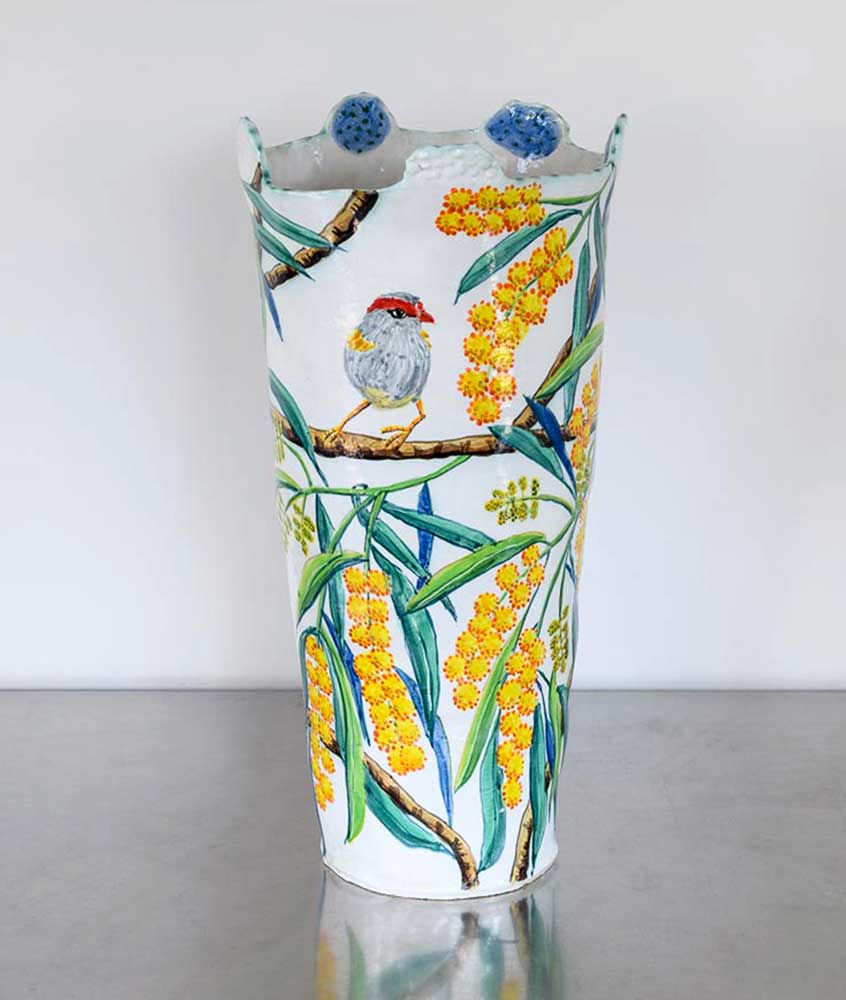Fiona Hiscock views the traditions of utilitarian ceramic vessels within a broader concept of functionalism, relating her forms to pieces that were used in daily domestic rituals of the past. Her vessels, loosely based on early colonial domestic objects such as water pitchers, basins and mixing bowls, are built by hand using the ‘coiling’ technique. They are overscaled and robust, reminding us of vessels designed to provide years of faithful service. In her most recent work, Fiona has departed from depicting introduced species and plants found in early colonial gardens and instead, turned her attention to Australian native species. Her current working method involves preparing watercolours on paper of the plants that interest her. The plants are carefully selected both for their symbolic as well as aesthetic value. Fiona then transfers the image, or parts of the image onto the pots by drawing directly onto the bone dry, unfired surface using a lead pencil. Of this process, Fiona says that “careful decisions need to be made as to how the shape of the plant will relate to the shape of the pot, and much effort goes into achieving a sense of balance within the work.” Ceramic stains and coloured oxides are then applied in much the same way that watercolours are used, building up layers of soft colour wash. Once the painting is complete, the work is bisque fired and then glaze fired.
Born in Melbourne in 1965, Fiona Hiscock completed her training at the Royal Melbourne Institute of Technology in the early 1990s. She has been exhibiting consistently since 1991 and her work is represented in the Parliament House Art Collection in Canberra as well as the collections of the Jewish Museum of Australia, Queensland University of Technology, Deakin University and regional galleries in Ballarat, the Gold Coast, Bathurst and Shepparton.









